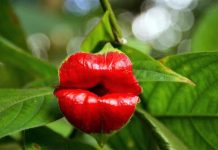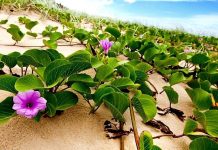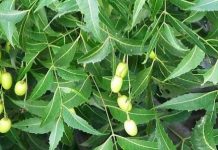Scientific name: Sesamum indicum L.
Family: Pedaliaceae
Synonym: Sesamum africanum Tod.
Bengali/Vernacular name: Til.
Tribal name: Goisshya (Chakma), Chaa-naw (Chak), Katteyei (Khumi), Sarria (Pangkhoa), Ney-da-sha-bawn (Rakhaing), Gaishya (Tanchangya), Nahaing pang (Marma).
English name: Sesame.
Description of the plant: An erect, annual, hairy herb, up to 1 m or more tall. Leaves oblong or ovate, 3-10 cm long, the lower ones lobed, the middle ones toothed, and the uppermost subentire. Flowers 3 cm long, solitary, axillary, and white to cream-coloured. Fruits are capsules, 2- or 4-celled, oblong, about 2.5 cm long.

Plant parts used: Leaf, seed.
Ethnomedicinal uses: Roasted seeds are taken with honey for remedy of constipation.
Paste prepared from the seeds of the plant is applied on the boils and wounds to treat it.
Leaves, which abound in the gummy matter, mixed with water to form bland mucilage used for infantile cholera, diarrhoea, dysentery, catarrh, cystitis, and strangury.
Decoction prepared from the seeds of the plant is taken for the treatment of cough.
Oil extracted from the seeds of the plant, massage that oil into the scalp, and leave it overnight for remedy of itching scalp and dandruff.
Decoction prepared from the leaves of the plant is advised to take for the treatment of fever and malaria.
A paste is made with the seeds of the plant is applied on the forehead for remedy of headache.
Powdered leaf applied to treat snake bite.
Oil extracted from the seeds of the plant is mixed with ginger powder then it is massage over the area for relief from swelling in any part of the body.
Distribution: The species occurs in cultivated condition throughout the country.
Is this plant misidentified? If yes, please tell us….














